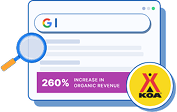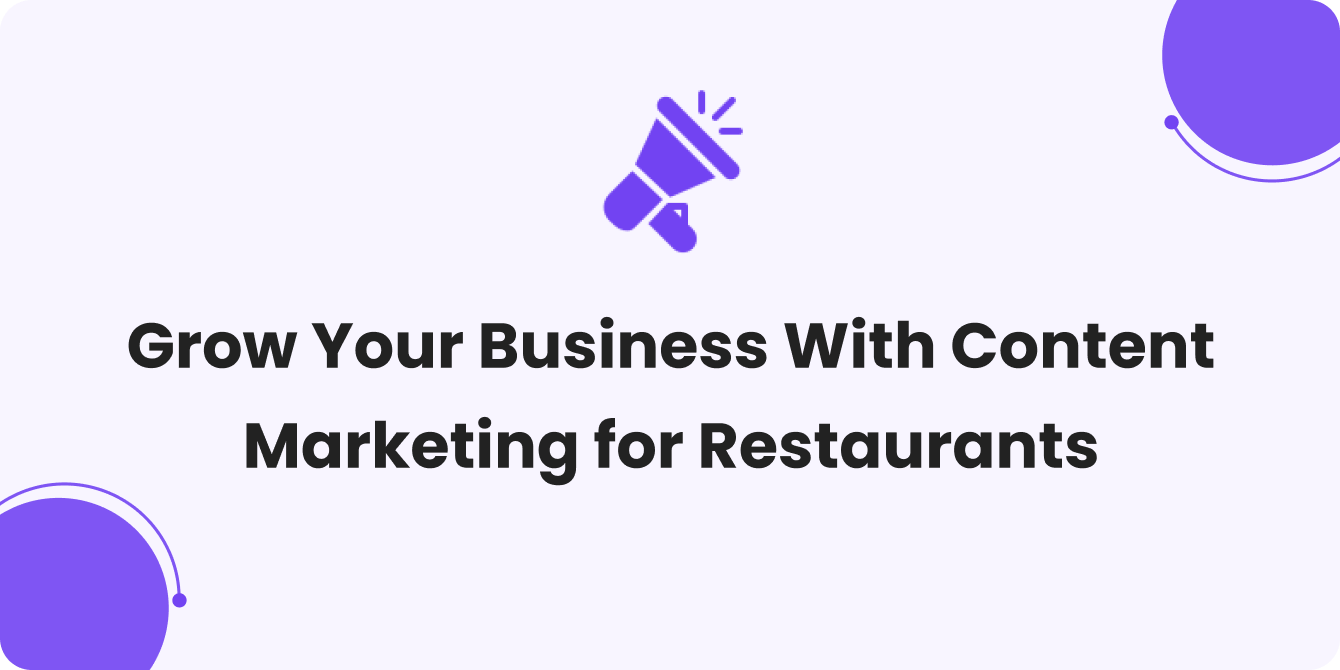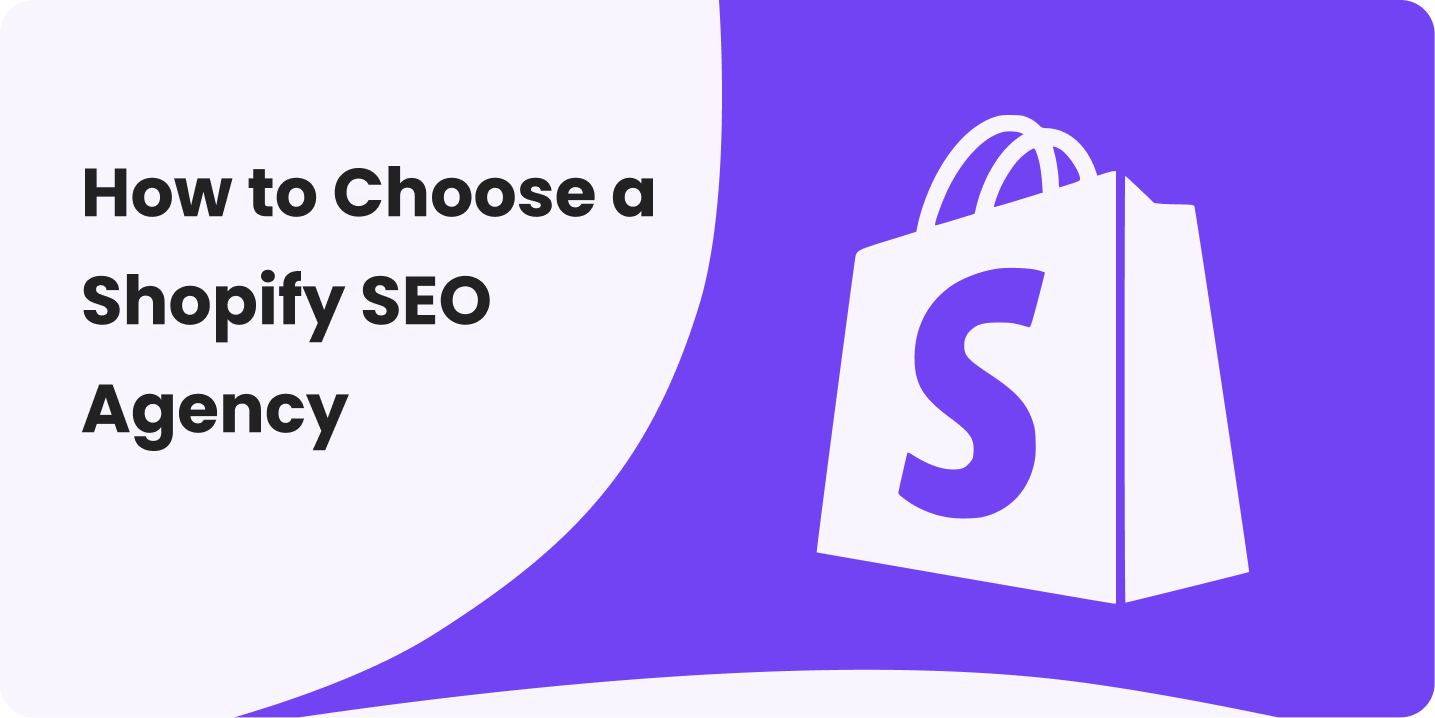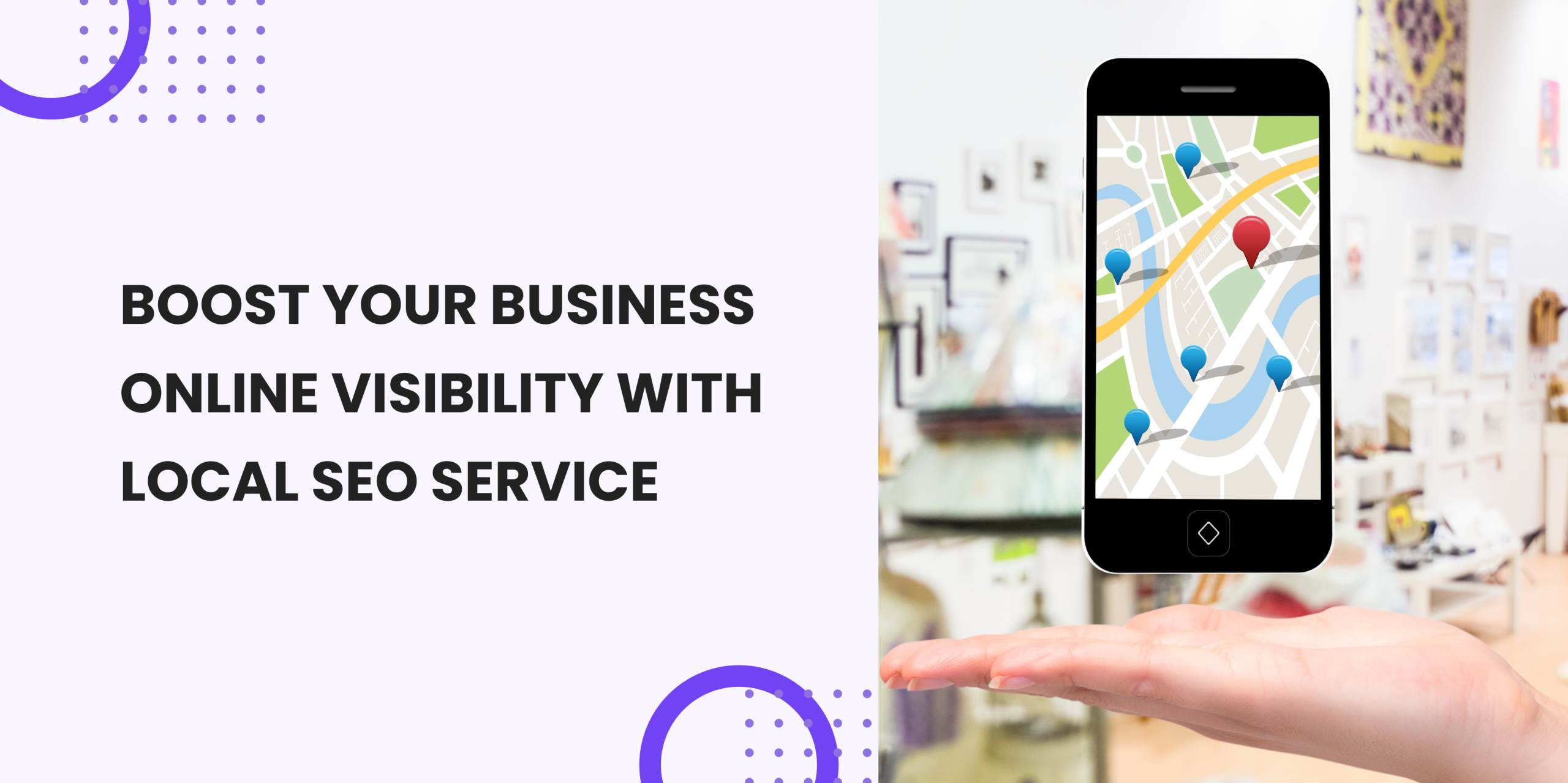You have a room full of potential customers, but if you have no idea who they are, what they need, or how to speak their language, you are at a total loss.
The right question is, Can you actually convince them to choose your product or service in a way that truly resonates? Probably not. That’s exactly what happens when businesses create content marketing campaigns without understanding their audience.
But if you have built a buyer persona, all your problems find their solutions.
If you think a buyer persona is just a fancy name for a customer profile, think again. A buyer persona goes far beyond basic demographics like age, gender, and location. It’s a strategic tool that helps businesses build meaningful connections with their ideal customers.

It’s a data-driven representation of your target audience’s behavior, pain points, goals, and decision-making processes.
So why do companies that implement buyer personas see 73% higher conversions compared to those that don’t? Because when you truly understand your audience, you can craft messages that speak directly to their needs, challenges, and aspirations.
Creating an effective buyer persona isn’t about guessing, it’s about research, strategy, and execution.
Here’s how you can develop buyer personas effectively, using a simple, structured process that helps you:
- Enhance brand awareness by ensuring your messaging resonates with the right people.
- Attract leads that are more likely to convert.
- Boost sales by addressing customer pain points and offering solutions they truly need.
We’ll also share a real-world example of a brand that nailed its buyer persona strategy and saw incredible results. Whether you’re a startup looking to scale or an established business aiming for stronger customer engagement, implementing buyer personas can be a game-changer.
What Is a Buyer Persona?
A buyer persona is a well-researched profile that outlines the key traits, behaviors, and needs of your ideal customer.
It goes beyond general demographics to create a character with real-life attributes, someone who embodies the specific needs, challenges, and behaviors of your target audience.
By building a well-defined buyer persona, businesses can craft marketing messages and content that speak directly to the right people, increasing engagement and conversions.
Here’s how you’ll understand it better.
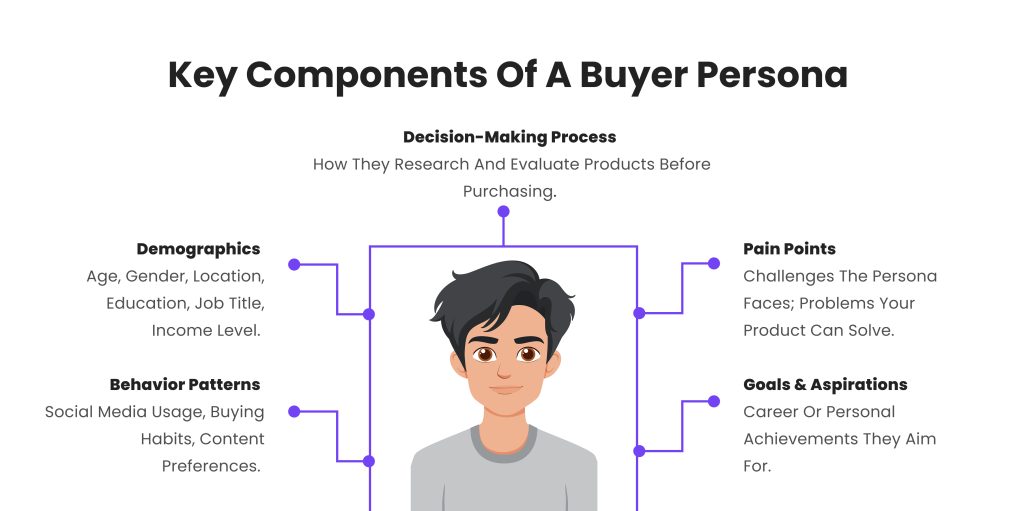
Imagine trying to market a product to “young professionals aged 25-30.” This vague group lacks personality and depth.
Instead, picture Bradley, a 27-year-old digital marketing specialist at a mid-sized company who aspires to become a marketing director. He struggles to balance professional growth with personal commitments and is actively looking for online courses to upskill.
By understanding Bradley’s goals, challenges, and decision-making process, businesses can create tailored content that genuinely resonates with him.
Why Buyer Personas Matter in Content Marketing
Buyer personas are the backbone of any successful content marketing strategy. Without them, brands risk creating generic, ineffective messaging that fails to connect with their audience.
A well-defined buyer persona goes beyond basic demographics, it delves into customer behaviors, pain points, and motivations, enabling businesses to craft more relevant and engaging content.
By understanding who they are speaking to, brands can optimize marketing efforts, drive higher engagement, and ultimately increase conversions.
Personalization is key in today’s crowded digital landscape. Generic content is easy to overlook, but when tailored to a customer’s specific needs and interests, it becomes compelling.
Companies like Spotify use buyer personas to recommend music based on user habits, enhancing engagement and loyalty.
Similarly, an online fitness coach could create targeted content like “5-Minute Workouts for Busy Professionals” for time-strapped executives or “The Ultimate Strength Training Guide for Young Athletes” for aspiring competitors.
This approach ensures content resonates with the right audience, leading to stronger connections and better results.
In addition to boosting engagement, buyer personas enable businesses to use their resources more strategically. Instead of spreading efforts thin across all platforms, brands can focus on the channels their target audience genuinely prefers.
A tech-savvy Gen Z audience may respond best to short-form videos on TikTok, while C-level executives may engage more with long-form LinkedIn articles.
By aligning content marketing strategies with audience preferences, businesses maximize their impact, reduce wasted effort, and create more meaningful interactions that drive conversions.
Difference Between Target Audience and Buyer Persona
Although they’re sometimes treated as the same, a target audience and a buyer persona represent two distinct ideas.
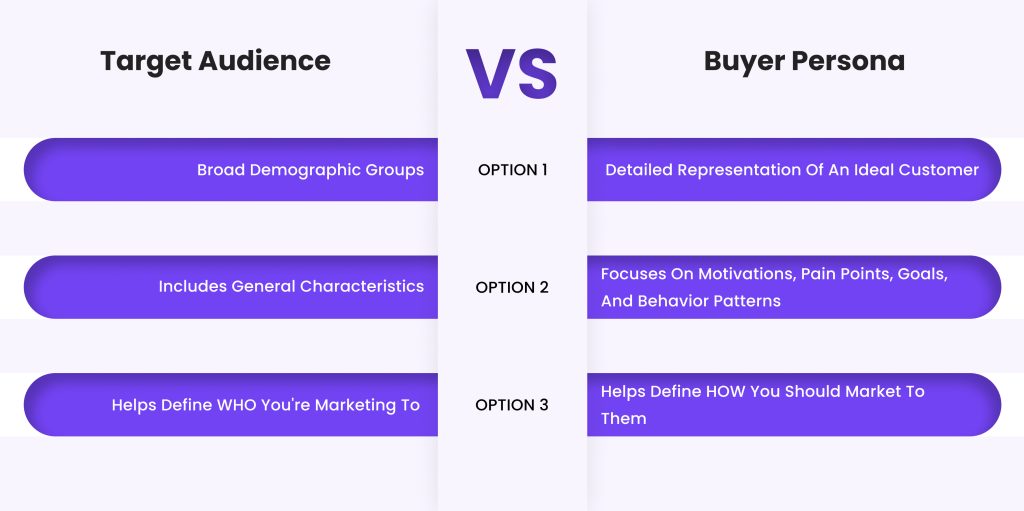
How to Create Effective Buyer Personas
The Meta Future believes that understanding your audience is the cornerstone of a successful marketing strategy.
Without a deep knowledge of who your ideal customers are, content becomes generic, misaligned, and ineffective. That’s why we go beyond surface-level demographics to develop data-driven, actionable buyer personas that shape our content strategy and maximize engagement.
A well-crafted buyer persona provides valuable insights into customer behavior, pain points, motivations, and decision-making processes.
By leveraging this data, we tailor our messaging, refine our approach, and ensure that we engage the right audience at the right time through the most effective channels. Instead of guessing what your audience wants, we create content that directly speaks to their challenges, aspirations, and preferences.
1. Gathering Meaningful Customer Data
All buyer personas in content marketing that we create are rooted in real-world insights. We start by collecting and analyzing data on both existing and potential customers. This allows us to identify key trends, behaviors, and preferences that shape our content strategy.
Key Data Sources:
- Sales Insights: We analyze past purchase patterns, including purchase frequency, job titles, industries, geographic locations, and demographic attributes like age and gender.
- Website Analytics: By studying traffic sources, popular pages, time spent on-site, keyword searches, and device usage, we understand how users interact with our content.
- Customer Feedback & Surveys: Direct audience interactions, including surveys, customer service inquiries, and chat transcripts, provide invaluable insights into pain points and motivations.
- Google Analytics Audience Insights: This helps us explore audience interests and refine content strategies to align with their preferences.
By tapping into these data points, we lay a solid foundation for developing buyer personas that truly reflect our audience.
2. Segmenting and Defining Key Personas
Once we’ve gathered enough data, we categorize it into distinct audience segments based on behavior, challenges, and goals.
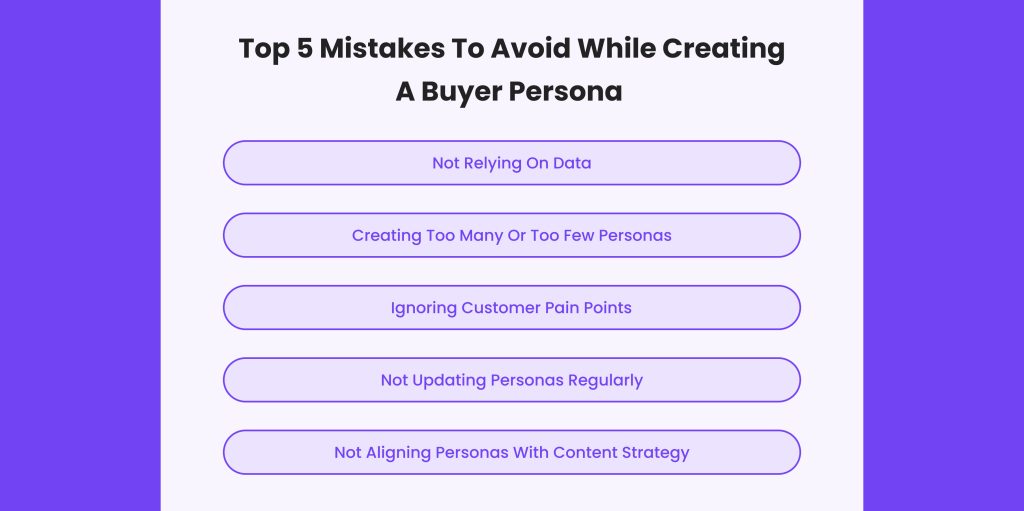
Rather than relying on generic demographic groupings, we focus on what truly differentiates our audience.
Key Questions for Persona Segmentation:
- Who makes up this segment?
- What are their biggest challenges and frustrations?
- What goals are they trying to achieve?
- How does our product/service fit into their journey?
- What type of content resonates with them the most?
There’s no set number of personas we create, it depends on the diversity of our audience. The goal is to develop clear, actionable personas that guide our content strategy.
3. Building a Comprehensive Persona Profile
After segmenting our audience, we craft detailed Buyer personas in content marketing profiles. These profiles help us create highly targeted content that directly addresses our audience’s needs.
Each buyer persona includes:
- Name & Background: Assigning a relatable name makes it easier to visualize the persona.
- Demographics: Age, gender, location, income, job title, and industry.
- Pain Points & Challenges: Identifying problems that our services can solve.
- Goals & Motivations: Understanding what drives their decisions.
- Preferred Communication Channels: Knowing where they consume content (social media, blogs, email, etc.).
- Buying Behavior: Analyzing decision-making processes, common objections, and purchasing triggers.
We structure these profiles using clear, concise snapshots or in-depth story-driven profiles, depending on the complexity of the persona.
To streamline this process, you can use free templates from HubSpot, SEMrush, Canva, and Miro to visualize our personas.
4. Implementing Buyer Personas in Our Content Marketing Strategy
Once we’ve built our buyer personas, we integrate them into every aspect of our content marketing strategy. This ensures that our content is highly relevant, personalized, and engaging.
How We Apply Buyer personas in content marketing:
- Personalizing Content: We tailor content to match unique pain points and preferences. For those who prefer in-depth analysis, we create case studies and whitepapers. For audiences who want quick insights, we develop bite-sized videos, blogs, and infographics.
- Optimizing for Search Intent: We use long-tail keywords that match specific audience queries, improving our content’s visibility and discoverability.
- Choosing the Right Platforms: We distribute content where our audience is most active. For B2B professionals, we focus on LinkedIn and blogs. For younger audiences, we leverage TikTok and Instagram.
5. Keeping Buyer Personas Updated
Buyer personas in content marketing are not static. As market trends evolve and customer behaviors shift, we regularly reassess and refine our personas to ensure they remain relevant.
This helps us stay ahead of industry changes and continuously improve engagement.
By crafting accurate, data-driven buyer personas, we ensure that our marketing efforts are strategic, personalized, and results-driven.
How to Actually Use Buyer Personas in Your Content Strategy
(Spoiler: It’s not just a slide in your brand deck)
You’ve done the hard part, you’ve built your buyer personas. Maybe even gave them names like “Startup Steve” or “Eco-conscious Emily.”
You know their age, job title, pain points, favorite podcasts, and even how they take their coffee.
But here’s the thing:
Personas aren’t magic unless you put them to work.
At The Meta Future, we’ve seen one pattern over and over: brands that use buyer personas just for internal understanding rarely see a real return.
But brands that build their content around these personas? That’s where transformation happens.
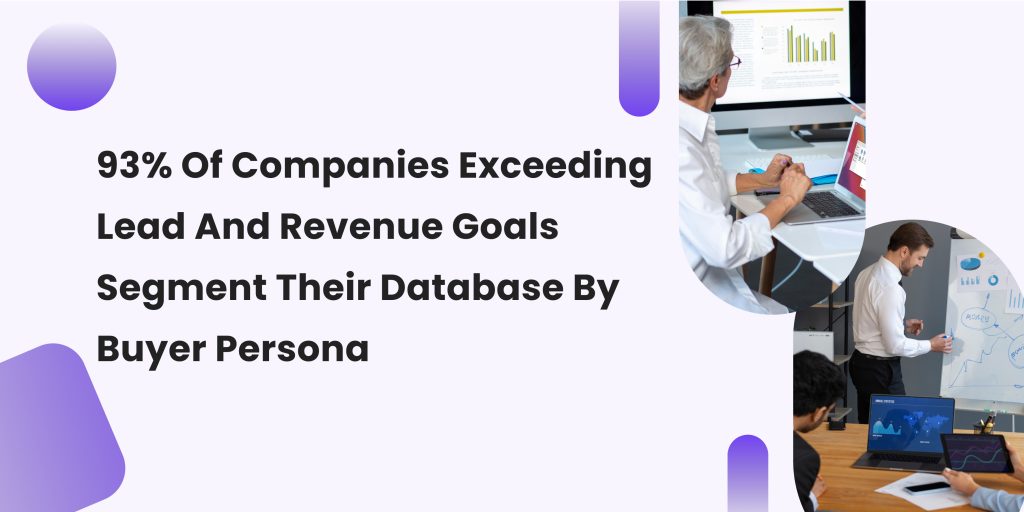
Let’s walk through how you can use buyer personas to fuel your entire content engine, strategy, storytelling, and success included.
1. Speak to Them, Not About Them
The biggest shift? Stop thinking of personas as data points. Start thinking of them as people.
When you truly understand who you’re writing for, how they think, what they fear, what excites them, your content naturally becomes sharper, more relevant, and more effective.
Take this real story:
We worked with an EdTech platform that had lumped all its users under “learners.” But once we dug in, we discovered three distinct personas:
- Career Switchers in their 30s
- Corporate Professionals upskilling for a promotion
- University Students navigating first jobs
We mapped content formats and tones for each:
- Blogs for switchers → long-form, personal growth stories
- Newsletters for professionals → crisp, data-backed trend insights
- Reels for students → fun, visual career tips
Same brand. Different voices. Engagement? Tripled in under six months.
2. Choose Formats That Fit How They Consume Content
Your content format isn’t just a stylistic choice, it’s a strategic one. Personas tell you more than what someone wants, they tell you how they want it.
Let’s say you’re targeting:
- Busy founders → give them audio (they’ll thank you during gym or traffic time)
- Gen Z creatives → give them TikToks, memes, or quick carousels
- C-suite leaders → give them infographics or whitepapers with hard numbers
We once helped a sustainable fashion brand connect with their “Minimalist Millennial” persona, eco-conscious, design-driven, and always scrolling. We turned behind-the-scenes blog posts into gorgeous lookbook-style carousels and creator-led IG stories.
Result? 4x more shares. Because it didn’t just inform, it resonated their way.
3. Hit Pain Points, Not Just Keywords
Most content says, “Here’s what we do.”
Persona-powered content says, “Here’s what you need.”
There’s a big difference.
Let’s say you’re marketing to small business owners. A blog titled “Why Digital Marketing is Important” might work… for Google. But for a cash-strapped entrepreneur juggling 12 tasks? It’s just more noise.
Instead, try this:
“Maxed out your marketing budget? Here’s how to stretch every dollar without compromising growth.”
That’s what using personas looks like. You don’t just talk at them, you step into their shoes. And when you do, your message starts to feel like a solution, not a pitch.
4. Segment Campaigns, Not Just Lists
Most brands are used to segmenting email lists, but what if you segmented your content strategy too?
Personas allow you to run parallel micro-campaigns that feel hyper-relevant to different people, even when you’re promoting the same product.
For a health brand, we once built two parallel email funnels:
- One for postpartum moms, empathetic, body-positive, community-focused
- Another for busy professionals, efficiency-focused, time-saving meal plans, and productivity language
Same product. Completely different framing. The result?
65% increase in click-throughs, just by being more human, more targeted, and more mindful.
5. Repurpose With Intention, Not Just Efficiency
Repurposing is smart. But persona-based repurposing is genius.
Let’s say you wrote a blog post titled: “The Top 5 Automation Tools for Solopreneurs”
Now what?
If you know your personas:
- For the “Tech-Savvy Entrepreneur” → Turn it into a step-by-step webinar
- For the “Skeptical Buyer” → Clip it into short 30-second trust-building explainer videos
- For the “Visual Learner” → Build a colorful checklist or flowchart for Pinterest or LinkedIn
Every piece of content has multiple lives if you know who you’re serving. And with persona insights, you’ll never repurpose blindly again. You’ll do it strategically.
Customer Pain Points and How to Address Them
No one wakes up excited to be marketed to.
But they do wake up worried about deadlines, frustrated by slow websites, stressed over finances, stuck in a career rut, or overwhelmed by decision fatigue. And that’s where the real opportunity lies.
Because while people may ignore a product pitch, they will pay attention to someone who seems to understand exactly what they’re going through.
That’s the power of identifying and addressing customer pain points.
A while ago, we worked with a life coaching startup. Their target audience? Burned-out professionals in high-pressure jobs. At first, their messaging focused on promoting “affordable life coaching programs” and “personal development packages.”
Crickets.
But when we dug deeper into how their audience actually spoke, through Reddit threads, blog comments, and support emails, we started seeing a different story.
People weren’t searching for “life coaches.”
They were typing:
- “Why do I feel stuck at work?”
- “How to stop dreading Mondays”
- “Is burnout ruining my life?”
Suddenly, everything changed. We rewrote their website, blog posts, and emails using the actual language their audience used. Within weeks, engagement soared. More clicks, more leads, more trust.
Here’s how you can do the same.
Step 1: Learn to Listen Before You Speak
The best content marketers aren’t the best writers, they’re the best listeners.
Pain points aren’t always loud. Sometimes they’re hidden in a 2-star review. Or buried in a support ticket. Or whispered in a Facebook group post at 2 AM.
Here’s where to tune in:
Customer Reviews & Feedback
Go beyond the stars. Read the reviews. What are people frustrated with? What features do they wish existed?
If you’re a SaaS brand and your reviews say, “Too many steps to complete a task,”, you’ve just found gold. That’s not a product flaw, that’s a content opportunity: create a tutorial called “How to do [X] in 2 clicks instead of 10.”
Sales and Support Teams
Your frontline staff are pain point detectives. They know what people are constantly asking, where confusion sets in, and what objections come up.
One of our clients’ sales teams kept hearing the same objection: “I’m not sure this will work for my business.” We turned that into a case study series featuring different industries. Objection handled. Sales conversions rose.
Online Search Behavior
What people type into Google is often more honest than what they’ll say out loud. Tools like AnswerThePublic, Google Trends, and even YouTube autofill can reveal the exact questions your audience is asking.
If “how to write a resignation letter without burning bridges” is trending and you sell career coaching? You know what to write next.
Step 2: Solve the Pain, Don’t Sell the Product
Once you know the problem, be the solution. Your content should feel less like a billboard and more like a helpful friend who gets it.
Here’s how you do that:
Create How-To Content That Eases the Pain
Break down the fix. Make it simple. Make it feel achievable.
If your audience struggles with “overwhelming to-do lists,” don’t just pitch a productivity app. Write a post called:
“The 3-List Method That Helped Me Take Back My Week.”
Give value first. Let trust build.
Use Case Studies to Build Belief
Show, don’t tell. People want to see someone like them who has had the same problem and overcame it with your help.
A B2B platform once told us, “No one reads our case studies.” We rewrote them like human stories, not dry PDFs. Suddenly, bounce rates dropped, and leads started referencing those stories on sales calls.
Go Visual Where It Matters
Some problems are easier to solve when you show the steps.
Infographics, videos, and even Instagram carousels can be great ways to visually explain a process or tip.
A skincare brand saw a 3x increase in saves when they turned a blog post titled “What Causes Dry Skin?” into an Instagram reel with a dermatologist explaining it in under 60 seconds.
Step 3: Speak Their Language, Always
The moment you start writing like your customer thinks, they start feeling like you’re reading their mind.
When you swap industry jargon for emotional resonance, something incredible happens, people stop scrolling.
Instead of:
“Our cloud-based CRM offers scalable pipeline management for sales enablement.”
Say:
“Your sales team wastes hours chasing leads that go nowhere. We fix that.”
How to Understand Consumer Habits for Better Content Targeting
Consumer behavior isn’t just about what people buy, it’s about how, when, and why they consume content. And the brands that pay attention to those details?
They get the clicks and the conversions.
At The Meta Future, one ecommerce client was struggling with content timing.
Once we dug into analytics, we realized their ideal buyer persona (busy working moms) engaged most between 8–9 pm, post dinner, when they could finally scroll in peace.
We adjusted the blog and email send times and saw a jump in CTR and conversions within two weeks.
Tools to Track Consumer Habits:
- Google Analytics: Shows you user flow, bounce rates, and peak times.
- Hotjar or Microsoft Clarity: Let’s you see what users actually do on your pages.
- Social media insights: Reveal which posts perform best, and when.
What to Watch:
- What platforms does your audience use most?
- What content formats do they engage with?
- How long do they spend on different types of content?
- What time they’re online?
Understanding these habits allows you to create smarter strategies. If your audience loves quick videos but rarely finishes a long blog, you know what to prioritize.
Advantages of Creating Persona-Based Content
You’ve probably heard that “content is king.” But in today’s attention-scarce world, that’s only half true.
The real king? Relevant content. And relevance starts with knowing exactly who you’re speaking to.
That’s where persona-based content steps in, not as a trendy marketing tactic, but as a strategic superpower. When brands shift from speaking to everyone to speaking directly to someone, everything changes.
Let’s dive into the real, game-changing advantages of persona-based content through the lens of stories and results we’ve seen firsthand.
1. Higher Engagement Starts with “That’s Me!” Moments
Imagine you’re scrolling through your feed. You see a post titled “How Freelancers Can Avoid Burnout When Juggling Clients.” You pause. Click. Read it to the end. Why?
Because it speaks to you.
That’s the magic of persona-driven content, it triggers recognition. It feels personal, almost eerily accurate. People don’t just skim; they pay attention, engage, and come back for more.
We’ve seen brands double their time-on-page metrics just by tweaking headlines and intros to speak directly to the reader’s daily life, pain points, and aspirations.
2. Better Conversions Because the Message Matches
Let’s talk results.
A nutrition coaching company came to us with a generic landing page. It was informative, but bland. We helped them segment their audience into key personas: “busy professionals,” “moms with toddlers,” and “fitness-first millennials.”
Each group got a landing page with tailored headlines, relatable pain points, and specific solutions.
Result? A 63% spike in conversion rates.
The lesson: When people see themselves reflected in your message, they move faster down the funnel, from curious to committed.
3. Personalized Experiences That Build Human Connections
Persona-based content does more than sell, it connects.
It tells your audience: We understand you. We’ve been where you are. We’ve got your back.
When you write for personas, your tone shifts from broadcasting to conversation. Your content becomes a relationship builder. And relationships convert far better than cold pitches.
This emotional connection is often what transforms first-time visitors into loyal fans, and loyal fans into advocates.
4. Brand Loyalty That Lasts Beyond the Sale
Let’s be honest: people don’t just want products, they want solutions, guidance, and someone who gets it.
When your blog posts, newsletters, and videos consistently address the specific frustrations, goals, and questions of your personas, your audience begins to trust you.
Over time, you stop being just another brand. You become a go-to source. A trusted guide. A part of their journey.
That’s the long game of content marketing. And it’s how brands build loyalty that no price war or competitor can shake.
5. Smarter Content Investments with Clear Direction
Here’s a dirty little secret of content marketing: a lot of it is guesswork.
But persona-based content changes that. Suddenly, you’re not throwing spaghetti at the wall, you’re serving gourmet to the right table.
Every blog, video, email, or social post now has a purpose. You’re solving real problems for real people. You know what topics matter. What language resonates? What platforms your personas live on.
This makes your content efforts more efficient and effective, cutting waste, increasing ROI, and giving you clarity on what to create next.
Benefits of Customer Personas Beyond Content Marketing
Buyer personas don’t just improve content; they power your entire marketing engine.
Here’s how they show up across the board:
- Email Marketing: Personalized subject lines and messaging improve open and click-through rates.
PPC Campaigns: Tailored ad copy performs better because it addresses specific needs. - Product Development: Personas offer insight into features your audience actually wants.
- Customer Support: Teams understand concerns faster and provide more relevant solutions.
We once worked with an edtech company that redesigned their onboarding flow after we identified three distinct buyer personas: the solo learner, the HR manager, and the career switcher.
Each needed a different welcome sequence, and when we delivered that? Their course completion rates skyrocketed.
Personas offer clarity. Across departments. touchpoints. Across goals.
Inbound Marketing Personas vs. Buyer Personas
We’ve all been there, halfway through a content strategy, staring at our audience segments and wondering, “Wait… aren’t these all just buyer personas?”
It’s a common mix-up. On the surface, inbound marketing personas and buyer personas sound like they’re doing the same job. But dig a little deeper, and you’ll find they’re solving very different pieces of the puzzle.
Let us walk you through a scenario we’ve seen more times than we can count.
We were working with a coaching platform targeting professionals in transition, people looking for career clarity, confidence, or leadership growth. They had built solid buyer personas, “The Ambitious Climber,” “The Burnt-Out Manager,” and “The Career Rebooter.” Each one had clear goals, frustrations, and content preferences.
But something was off.
Their traffic was inconsistent. Leads were coming in, but not the right ones. Blog posts were insightful, but conversions? Meh.
So, we zoomed out, and that’s when we realized: they had great buyer personas, but no clear inbound personas. They knew who to talk to, but they hadn’t figured out how those people found them in the first place.
Here’s where the difference comes in:
- A buyer persona focuses on the decision-making journey. It tells us what someone wants, what’s stopping them, and what kind of content they’ll find most helpful at each stage, from “I think I need help” to “Let’s talk solutions.”
- An inbound marketing persona, on the other hand, is all about visibility and discovery. It helps us understand how someone searches, scrolls, clicks, and ultimately lands on your content. It lives at the top of the funnel, SEO, social posts, Google queries, email signups. That’s its playground.
So while buyer personas shape what we say and when we say it, inbound personas shape how we get found in the first place. We build journeys that start where your audience hangs out and continue all the way to a meaningful conversion.
It’s not just about attracting people, it’s about attracting the right people, and then giving them exactly what they need, when they need it.
Summery
Understanding the buyer persona in content marketing isn’t optional, it’s the foundation of everything. The brands that win are the ones that truly get who they’re speaking to, what those people care about, and how to meet them exactly where they are.
So if you’re still creating “one-size-fits-all” content, it’s time to stop.
Start small. Talk to a few customers. Dive into your analytics. Build your first persona, even if it’s rough.
Then create content like you’re having a real conversation, with empathy, clarity, and purpose.
Because in a world full of content clutter, relevance wins.
And when you’re ready to turn those insights into strategy, when you’re ready to create content that actually connects, there’s a team that’s been doing just that, across industries and audiences. One that lives and breathes persona-powered content, every single day.
You know where to find us. Let’s build something people will actually care about.


